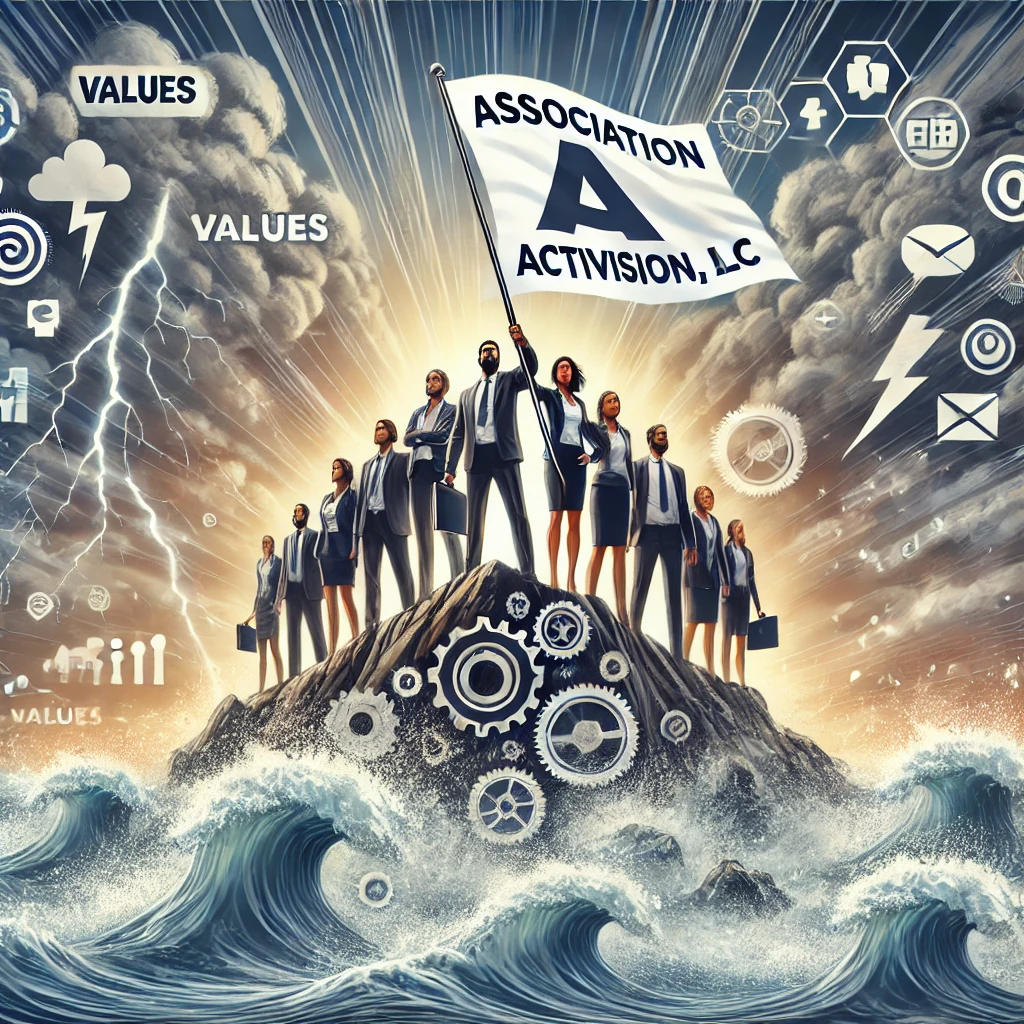
Introduction
Disruptive times test the resilience of every association. Economic downturns, political shifts, social upheavals, and technological changes can create intense pressure to pivot, compromise, or even abandon long-held values. In these moments, it’s easy for organizations to focus solely on survival—sometimes at the cost of their core purpose.
But history shows that associations, people, and nations that remain steadfast in their mission and values survive and thrive despite significant disruption. The key is to balance adaptability with integrity, ensuring that your values remain the guiding force behind decision-making.
So, how can associations hold the line and fight for their values when the world is rapidly shifting?
1. Know Your Non-Negotiables
Every association has a set of core values that define its purpose and promises to members. These should be crystal clear before a crisis hits.
Ask:
- What foundational principles will we not compromise on, no matter the external pressures?
- How do these values guide our decision-making in times of uncertainty?
- Can we articulate these values to stakeholders in a way that makes them actionable?
For example, during the COVID-19 pandemic, many professional associations in the healthcare sector faced dilemmas about event cancellations, budget reallocations, and shifting member services. Those who held firm on their mission to support healthcare professionals—through virtual education, advocacy, or crisis response—emerged more potent and trusted.
2. Balance Adaptability with Integrity
Adaptation is essential during disruption, and Associations that refuse to change risk irrelevance. However, adaptation should never mean abandoning the organization’s core identity.
A case in point: Many associations have struggled with technological disruption, particularly in delivering value to members. Some have shifted entirely to digital platforms, while others have hybridized their offerings. The most successful organizations have evolved in ways that align with their mission rather than reacting out of fear or pressure.
The key question is: How can we evolve in a way that strengthens, rather than weakens, our values?
3. Equip Leaders for Value-Based Decision-Making
Boards and executive teams often bear the brunt of making tough calls during crises. However,even well-intentioned leaders may struggle without a clear framework for value-based decision-making.
Associations can prepare by:
- Providing training on ethical leadership and crisis management.
- Using a “values filter” for significant decisions—asking how each action aligns with organizational purpose.
- Encouraging dissenting voices and diverse perspectives ensures the board isn’t operating in an echo chamber.
A real-world example: When the Society for Human Resource Management (SHRM) faced internal and external challenges regarding its stance on DEI (Diversity, Equity, and Inclusion), leadership had to navigate difficult conversations about its public positioning. Responding to such challenges often determines whether an organization maintains trust or erodes credibility.
4. Engage Members in the Fight
Members are not just passive consumers of association services but stakeholders in their mission. In times of disruption, associations that actively engage their members in reinforcing their values gain strength.
Ways to involve members:
- Advocacy Campaigns – If external forces challenge the association’s purpose, mobilize members to advocate for it.
- Storytelling – Share real member stories highlighting the impact of staying true to your values.
- Volunteer Engagement – Create opportunities for members to contribute directly to initiatives that uphold the association’s mission.
Consider how professional associations have rallied members to push back against regulatory changes, protect funding sources, or promote industry or discipline-wide standards. These efforts are most vigorous when members see themselves as part of the cause.
5. Communicate with Transparency
Disruptive times create uncertainty, and uncertainty breeds fear. The worst mistake an association can make is to go silent when members seek reassurance.
Transparent communication strategies should include the following:
- Regular updates – Even if no easy answers exist, letting members know what leadership is thinking builds trust.
- Open forums – Providing spaces for discussion, such as town halls or digital Q&As, allows members to voice concerns.
- Acknowledgment of challenges – Associations that admit difficulties rather than pretending all is well foster stronger connections with stakeholders.
A great example: During the pandemic, some associations openly shared financial challenges with members and even asked for input on solutions. This transparencybuilt goodwill and, in some cases, led to increased member support.
Coda
Disruptions will come and go, but an association’s values must remain the bedrock of its identity. Organizations that navigate crises successfully do so by standing firm on their mission, engaging their members, making value-based decisions, and communicating transparently.
The lesson? Don’t let external chaos dictate internal values. Instead, let your values dictate how you navigate chaos.
By doing so, your association won’t just survive disruption—it will emerge stronger, more trusted, and better positioned for the future.